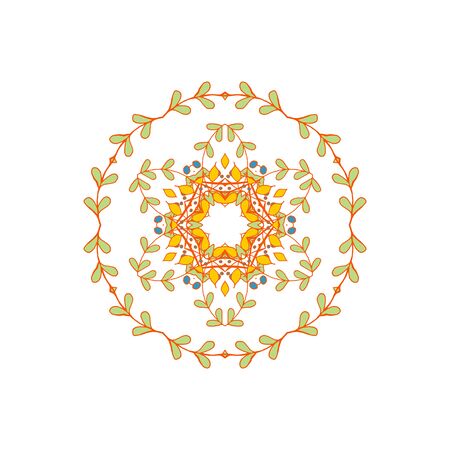1. Introduction: The Cultural Significance of Traditional Indian Paintings
Traditional Indian paintings are more than just vibrant adornments for our homes—they are powerful carriers of cultural legacy and spiritual energy. Art forms like Madhubani from Bihar, Warli from Maharashtra, and Pattachitra from Odisha and West Bengal beautifully encapsulate the timeless values, myths, and rituals cherished by Indian families for generations. Each brushstroke in these art styles is infused with symbolic meaning, reflecting not just India’s artistic heritage but also its deep-rooted respect for nature, deities, and community harmony. By welcoming these traditional paintings into our living spaces, we invite an aura of positivity and prosperity that resonates with our collective Indian spirit and family-centric ethos.
Popular Traditional Painting Styles in India
India’s vibrant art heritage is beautifully reflected through its diverse traditional painting styles, each carrying unique stories, spiritual depth, and regional flavour. These art forms are cherished for their ability to infuse homes with positive energy and a sense of cultural pride. Below, we explore some of the most popular traditional Indian painting styles that continue to inspire and energise Indian households.
Tanjore Paintings
Originating from Tamil Nadu, Tanjore paintings are known for their rich colours, surface richness, compact composition, and the lavish use of gold foil. Depicting Hindu gods and goddesses, these works often become spiritual focal points at home. Their intricate detailing and divine themes are believed to attract auspiciousness and prosperity.
Kalamkari Art
Kalamkari, meaning “pen craft,” hails from Andhra Pradesh and Telangana. This style uses natural dyes on cotton or silk fabrics and narrates mythological stories through elaborate motifs and figures. The earthy tones and organic materials used in Kalamkari make it perfect for eco-conscious homes seeking an artistic yet harmonious vibe.
Rajasthani Miniature Paintings
These paintings emerged from the royal courts of Rajasthan and are famed for their fine brushwork and exquisite detail. Often illustrating scenes from epics like Ramayana and Mahabharata or depicting royal life, Rajasthani miniature paintings bring regal elegance and storytelling tradition into modern living spaces.
Gond Art
Gond art originates from the Gond tribe in Madhya Pradesh. Recognised by its vibrant palette, imaginative patterns, and depictions of nature—animals, trees, folklore—Gond art is celebrated as a medium that channels positive energy and tribal wisdom into contemporary Indian homes.
Key Features at a Glance
| Painting Style | Region of Origin | Main Features | Energy & Symbolism |
|---|---|---|---|
| Tanjore | Tamil Nadu | Gold leaf work, religious themes, bold colours | Auspiciousness, prosperity, divinity |
| Kalamkari | Andhra Pradesh & Telangana | Natural dyes, mythological storytelling, fabric-based art | Harmony with nature, cultural roots |
| Rajasthani Miniature | Rajasthan | Fine detailing, royal & epic scenes, bright hues | Regal charm, narrative tradition |
| Gond Art | Madhya Pradesh | Lively patterns, nature-inspired motifs, tribal folklore | Energising spaces, connection to earthiness |
Choosing the right style for your home not only enhances aesthetic appeal but also aligns your space with positivity drawn from centuries-old Indian traditions.

3. Vastu Shastra and Positive Energy
In India, the ancient science of Vastu Shastra holds immense significance in shaping the flow of positive energy within homes. Vastu, often described as the “yoga of design,” emphasizes harmony between nature, architecture, and interior décor to cultivate prosperity, health, and happiness. Traditional Indian paintings play a pivotal role in this holistic approach by acting as powerful conduits for auspicious energies.
The Relationship Between Art and Vastu Shastra
Traditional Indian art forms—such as Madhubani, Pattachitra, Rajasthani miniature paintings, and Tanjore art—are rich in symbolism and are believed to attract specific vibrations beneficial for home environments. According to Vastu principles, the correct selection and placement of these artworks can enhance various aspects of life, from wealth to relationships.
Strategic Placement for Maximizing Positivity
Vastu Shastra guides homeowners on where to display certain motifs for maximum effect. For example, paintings depicting Lord Ganesha or Lakshmi are often placed at entrances or in living rooms to invoke blessings and prosperity. Similarly, serene landscapes or images of flowing rivers are recommended for the northeast direction to stimulate clarity and peace of mind. Each direction in a home is associated with unique energies; aligning artwork accordingly ensures a harmonious atmosphere.
Auspicious Motifs Rooted in Local Culture
Popular motifs such as peacocks (symbolizing grace), lotuses (representing purity), elephants (for strength and wisdom), and traditional geometric patterns like mandalas are considered highly auspicious in Indian households. These symbols not only beautify spaces but also serve as reminders of India’s spiritual heritage and collective aspirations for abundance. By thoughtfully incorporating traditional paintings that align with Vastu guidelines, families can transform their homes into sanctuaries radiating positive energy and local cultural pride.
4. Choosing the Right Paintings for Indian Homes
Selecting traditional Indian paintings for your home is not just about aesthetics; it’s deeply rooted in aligning with family aspirations and the positive energy you wish to invite. In Indian culture, artworks are often chosen based on their symbolism—prosperity, health, harmony—and are thoughtfully placed to enhance the overall vastu (energy flow) of a space. During festivals like Diwali, Navratri, or Pongal, families may refresh their homes with art that resonates with the festive spirit and their personal goals.
Themes That Attract Positive Energy
When choosing paintings, consider themes that mirror your intentions:
| Theme | Symbolism | Popular Choices | Placement Tips |
|---|---|---|---|
| Prosperity | Wealth & Success | Lakshmi, Elephant motifs, Bani Thani art | Living room, entrance area facing inside |
| Health | Vitality & Wellness | Buddha portraits, Tree of Life, Village scenes | Dining area or meditation space |
| Harmony | Peace & Unity | Radha Krishna, Family gatherings in Madhubani style, Peacocks | Family room or bedroom wall shared by couples |
Aligning Art with Family Goals and Festivals
Many Indian families revisit their art choices during key festivals or life milestones—like Griha Pravesh (housewarming), weddings, or anniversaries—to realign their environment with evolving aspirations. For example:
- Diwali: Introducing new Pichwai or Tanjore paintings featuring deities for abundance and auspiciousness.
- Pongal: Opting for rural landscapes symbolising harvest and gratitude.
- Navratri: Displaying vibrant folk arts depicting Goddess Durga to invite feminine strength.
Selecting Artworks Mindfully
Avoid artworks depicting sorrow, conflict, or loneliness as they may disrupt the desired energy balance. Instead, select pieces that radiate positivity and align with your family’s journey and collective ambitions. Always remember: the right painting can be a powerful ally in manifesting your dreams while honouring Indian traditions.
5. Tips for Displaying Art in the Indian Home
Integrating traditional Indian paintings into your home isn’t just about aesthetics—it’s also about enhancing the positive energy and spiritual harmony of your living space. Here are some practical, culturally-aware suggestions to display these artworks in a way that resonates with Indian traditions and beliefs.
Choose Auspicious Locations
Placement matters in Indian culture. Place spiritual paintings, such as depictions of Lord Krishna, Goddess Lakshmi, or scenes from the Ramayana and Mahabharata, in the pooja room or spiritual corners. This not only invites divine blessings but also aligns with Vastu Shastra principles, which advocate for positioning sacred images towards the northeast direction whenever possible.
Enhance Family Spaces
Living rooms and family areas are ideal for showcasing large Madhubani, Warli, or Pattachitra paintings. These vibrant artworks can be focal points that foster togetherness and spark meaningful conversations. Choose themes like village life, nature, or mythological stories that inspire positivity and harmony among family members.
Create a Serene Ambience
For bedrooms and private spaces, opt for calming paintings such as lotus motifs or Radha-Krishna depictions. Soft colors and peaceful imagery promote relaxation and emotional well-being. Always avoid placing images depicting violence or turmoil in these personal zones.
Respect Sacred Imagery
Never hang religious paintings near bathrooms or directly on walls shared with toilets—this is considered disrespectful in Indian culture. Instead, elevate sacred art by placing it above eye level on clean, uncluttered walls, ideally adorned with fresh flowers or diyas during festivals and special occasions.
Blend Tradition with Modernity
If your home features contemporary interiors, traditional Indian paintings can act as powerful statement pieces. Use elegant frames or backlighting to highlight their intricate details while preserving their cultural essence. This blend not only attracts positive energy but also showcases your appreciation for heritage within a modern setting.
By thoughtfully displaying traditional Indian paintings with respect to cultural norms and spiritual values, you can transform your home into a sanctuary of prosperity, happiness, and vibrant energy.
6. Supporting Indian Artists and Sustainable Choices
When selecting traditional Indian paintings to bring positive energy into your home, it is vital to consider the profound impact of your purchase decisions. Buying authentic artworks from skilled artisans not only ensures that you are bringing home a piece of genuine cultural heritage, but also helps in sustaining centuries-old art forms like Madhubani, Warli, Tanjore, and Pattachitra. By choosing to support local artists, you contribute directly to their livelihoods and empower artisan communities across India.
The spirit of ‘Make in India’ and ‘Atmanirbhar Bharat’ is deeply woven into the promotion of indigenous crafts. When you invest in original Indian paintings, you encourage self-reliance and strengthen the national economy, fostering pride in our rich artistic traditions. Furthermore, opting for sustainable choices—such as natural pigments, handmade paper, or eco-friendly framing—demonstrates respect for both the environment and the culture behind each masterpiece.
The Ripple Effect of Conscious Purchasing
Your decision to buy directly from artists or certified collectives goes beyond mere decoration; it creates a ripple effect that nurtures talent, preserves heritage, and keeps the artistic legacy alive for future generations. By making mindful choices aligned with Indian values and supporting local craftsmanship, you not only enhance your living spaces with positive energy but also champion a movement toward cultural and economic empowerment.
Choosing Authenticity Over Imitation
In a market flooded with mass-produced replicas, prioritising authenticity safeguards the unique stories and techniques embedded in every brushstroke. It’s not just about aesthetics—it’s about honouring the hands that create them and ensuring that traditional knowledge continues to thrive in modern India.
Embrace Tradition, Empower India
Let your home be a testament to the vibrant spirit of India by consciously selecting traditional paintings made by local artists. In doing so, you become part of a larger vision—one where art uplifts homes with positivity while driving growth and sustainability for our nation’s creative communities.

